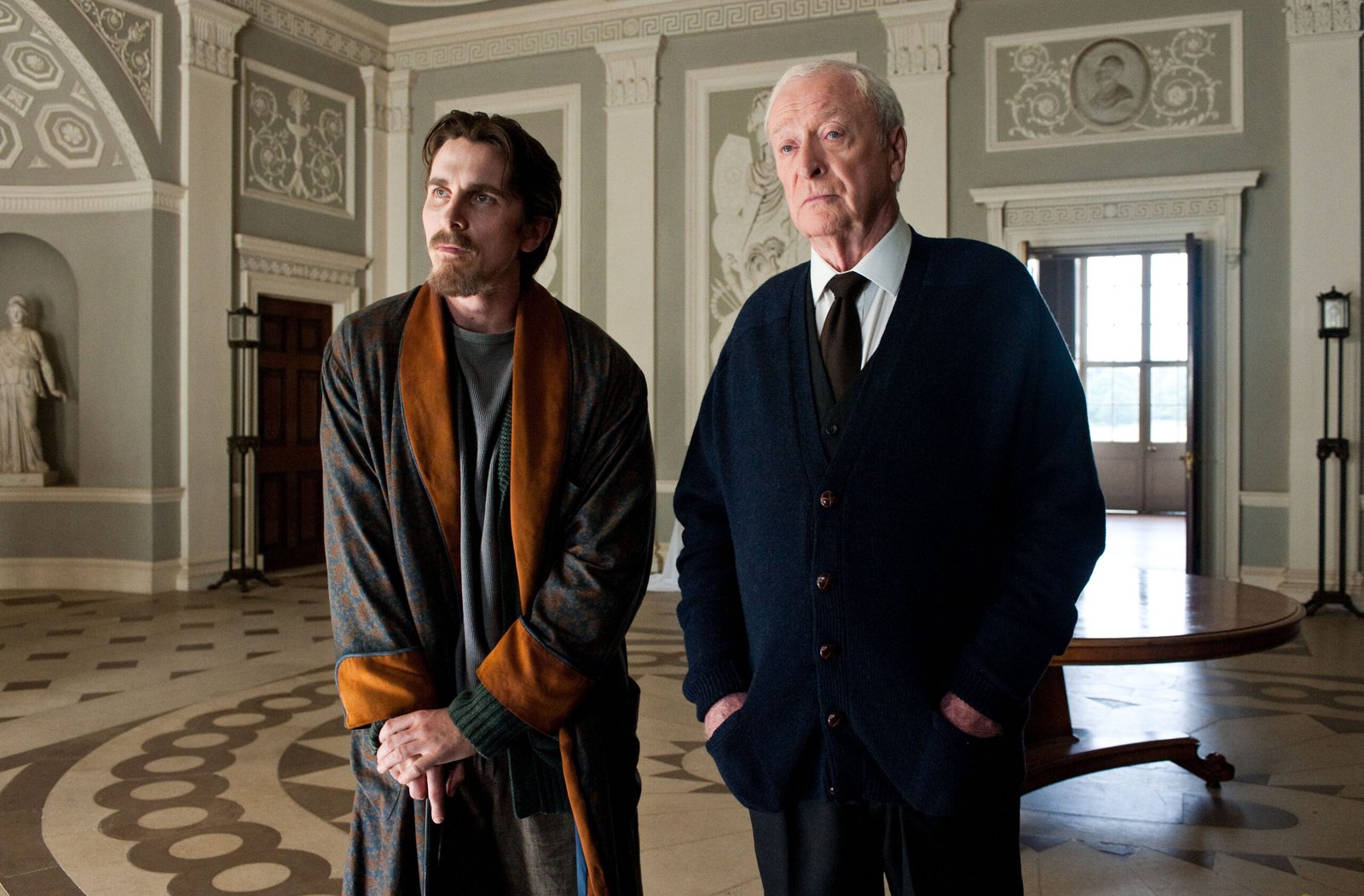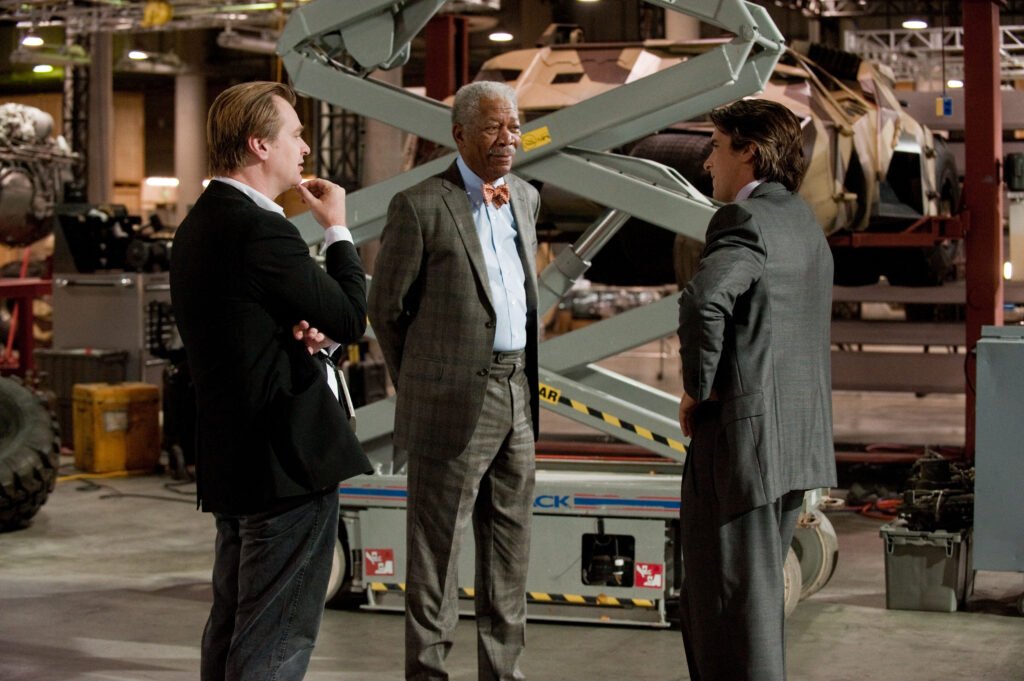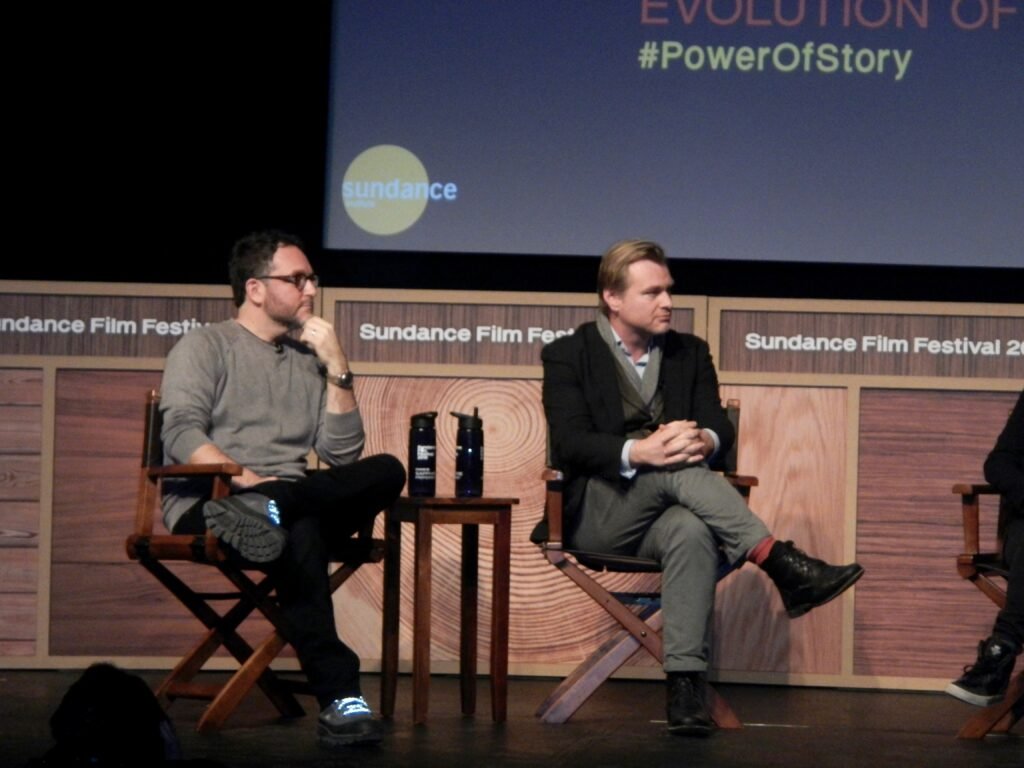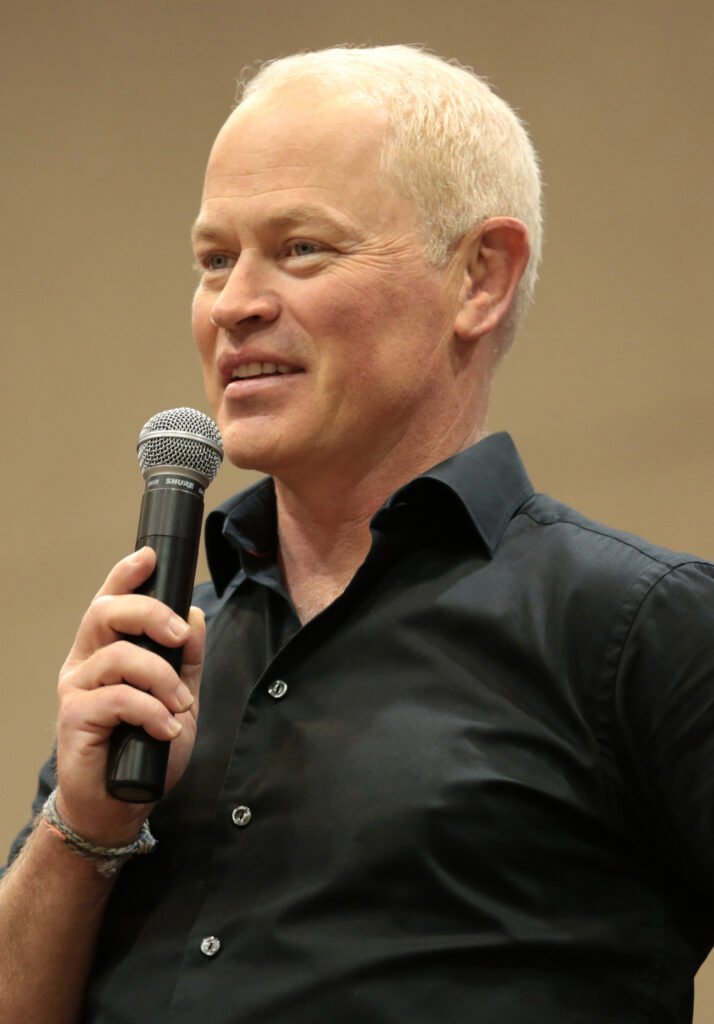Entertainment
Why Do Christopher Nolan Movies Feel Different?

Christopher Nolan stands as one of the most celebrated and distinctive filmmakers of the 21st century. In an industry dominated by sequels, remakes, and franchise entries, Nolan consistently charts his own course, earning admiration, perplexity, and above all, a sense of wonder from audiences worldwide.

An Outlier in the Blockbuster Era
While most major studios bank on established intellectual properties, Nolan operates as a remarkable outlier, crafting original narratives that explore complex philosophical concepts and intricate storytelling. From his humble beginnings—his first film created with a mere $6,000 budget, lamp lights, and the support of friends and family—Nolan transformed resource limitations into stylistic foundations that define his cinema today.

Signature Motifs and Themes
A hallmark of Nolan’s work is his use of motifs—visual, conceptual, and sonic. He weaves repeated patterns into his films to support their central themes:
- Inception: Totems serve as symbols of blurred realities.
- Interstellar: The concept of time becomes the film’s emotional and narrative core, representing distance, resource, and existential reckoning.
- Insomnia: Bright windows symbolize guilt and eroding mental states.
Nolan’s obsession with time—as both theme and structural device—sets him apart from his contemporaries. In “Dunkirk,” he masterfully tells the same event from three overlapping timeframes, showing how perspectives shift with new information, enriching the audience’s experience each time a moment is revisited.
Visual Storytelling and Scale
Nolan’s films are renowned for their monumental sense of scale. His use of establishing shots is selective but impactful. Rather than simply setting a scene, he pulls back to reveal the vast magnitude of unfolding events. This approach heightens the emotional stakes and immerses viewers in the narrative.
Authenticity is a cornerstone of Nolan’s style:
- He’s unafraid to leave minor mistakes in the final cut, adding to the realism.
- Rejecting the highly stylized visuals of peers like Zack Snyder or the controlled symmetry of Wes Anderson, Nolan seeks “heightened naturalism,” creating immersion through a realistic lens.
- His blocking is straightforward and focused on moving the story forward, as seen in action sequences like those in “The Dark Knight.” He prefers efficiency over spectacle, contrasting with the elaborate long takes of other modern directors.
Crafting Atmosphere: Cinematic Techniques
- Collaborator Partnerships: Cinematographers Wally Pfister and Hoyte van Hoytema help manifest Nolan’s vision, marked by silhouettes, inserts, symmetry, repeated visual elements, and Kubrickian one-point perspectives.
- Technical Choices: Nolan is committed to shooting on film, utilizing real locations, and favoring practical effects over CGI. Even when visual effects are necessary, he carefully combines them with practical shots to maintain the illusion of reality.
Flaws and Criticisms
Nolan’s signature style is not without its critics:
- His intricate, puzzle-like plots can render his films opaque, sometimes sacrificing emotional clarity.
- There is heavy reliance on expository dialogue instead of natural character development, making motivations and relationships feel underdeveloped.
- Communication can be deliberately obstructed: characters speak through masks or overbearing sound design, occasionally frustrating viewers seeking straightforward storytelling.
- Dialogue may be muddled by sound mixing choices, leading to varying viewer experiences depending on the screening environment.

Lasting Impact and Industry Influence
Despite these contentious elements, Nolan’s impact reshapes modern cinema:
- His push for practical effects has inspired a new wave of productions to tout their “no-CGI” authenticity.
- The “Inception horn” sound design became a genre-defining audio cue, echoed in trailers across Hollywood.
- Nolan’s journey, from self-taught artist with no formal film education to helming massive studio movies, embodies the creative dream for aspiring filmmakers.

Cultural Resonance
Nolan’s films resonate deeply because they reflect contemporary anxieties and desires:
- They wrestle with themes like the inevitability of time, fragility of memory, and the lure of escaping reality.
- His elaborate aesthetics invite audiences to create personal meaning within the cinematic experience.
Conclusion
Ultimately, Christopher Nolan’s movies feel different because they operate at the intersection of innovation, intellect, and authenticity. Whether dazzling audiences with ingenious structures or provoking debate over their complexity, Nolan’s films spur viewers to think, feel, and dream—mirroring society’s search for meaning in an uncertain age.
Entertainment
Hollywood’s Kiss or Miss Policy: Why Saying No Got Neal McDonough Blackballed

Neal McDonough’s name is synonymous with versatility on screen — from gripping war dramas like Band of Brothers to contemporary hits like Yellowstone. Yet behind his steady career lies a lesser-known story, one that exposes Hollywood’s surprising intolerance for personal conviction. McDonough’s insistence on a no-kissing rule in his contracts, a commitment driven by loyalty to his wife and family, resulted in a devastating blacklist that nearly cost him everything.

Holding Fast to His Values
Married since 2003 to model Ruvé Robertson and a devoted father to five children, McDonough chose not to compromise on his core beliefs, even at professional cost. Rather than chase fame at any price, he set a clear boundary that he would not share on-screen kisses with any woman other than his wife.
“I always had it in my contracts: no kissing other women on-screen,” McDonough explained. “I knew what it meant for my family, for my relationship, and I wasn’t going to step over that line.”
This deeply personal stance wasn’t born out of ego or sanctimony but a desire to protect the sanctity of his marriage and the wellbeing of his family.
“My wife is my priority,” he said. “The rest can wait.”
The Cold Shoulder from Tinseltown
What followed wasn’t the Hollywood applause McDonough might have hoped for, but instead a professional exile. Industry gatekeepers reportedly rejected him from roles and even dropped him mid-production over his refusal to perform intimate scenes that contravened his no-kissing policy.
“Hollywood turned on me hard and fast,” McDonough shared candidly. “I lost everything — the work, the goodwill, my sense of self.”
Reports surfaced of McDonough being pulled from a show Scoundrels just days into filming because he declined a kissing scene. The implication was clear: in Hollywood, kissing other women wasn’t a mere acting choice; it was a mandatory rite of passage.
Courage in the Face of Pressure
Neal McDonough’s story is an uncommon example of a man standing his ground in an industry built on appearances and compromises. His ordeal lays bare Hollywood’s tendency to steamroll personal boundaries in favor of “business as usual.”
“Intimacy is sacred to me,” McDonough said. “When I drew the line, it wasn’t popular, but it was necessary for who I am.”
His wife, Ruvé Robertson, who has stood beside him throughout, expressed unwavering support for his decision.
“Neal’s integrity is why our family stays strong. It’s more important than any role, any accolade,” she said.
A Journey Back to the Spotlight
After enduring years of silence and struggle, McDonough found his footing again through key allies in the industry who respected his boundaries and talent. Notably, in the film The Last Rodeo(2025), he broke his no-kissing rule — but only with his wife playing his on-screen partner.
“That kiss wasn’t just performance; it was a celebration of loyalty,” he reflected. “I had to have my wife by my side for it to feel right.”
The Bigger Picture
Neal McDonough’s journey challenges Hollywood to rethink its rigid expectations of actors and respect individual values. It’s a compelling story of fidelity and courage in an industry that often demands conformity at all costs.
“I hope my story encourages others to hold firm to who they are,” McDonough said. “Because no role should cost you your integrity.”
Entertainment
Ariana Grande’s Red Carpet: When Fans Forget Boundaries

At the Singapore premiere of the highly anticipated film “Wicked: For Good,” Ariana Grande faced an unsettling moment that quickly went viral. As the pop star confidently walked the yellow carpet alongside her co-stars, an overzealous fan, identified as 26-year-old Johnson Wen, broke through security barricades and lunged at her, grabbing her in an unexpected and alarming manner. The incident was swiftly halted thanks to the quick intervention of Ariana’s co-star Cynthia Erivo, who shielded the singer until security subdued the intruder.

Known online as “Pyjama Man,” Wen has a notorious reputation for crashing high-profile events to gain viral attention. This was not his first stunt; he had previously disrupted performances by stars like Katy Perry and The Weeknd. Following the incident, Wen posted footage of himself on Instagram, captioning it,
“Dear Ariana Grande, Thank You for letting me Jump on the Yellow Carpet with You,” much to the dismay of fans who criticized his reckless behavior.
The event has sparked widespread discussions about the safety and boundaries of celebrities attending public events. Ariana Grande, who has openly struggled with anxiety and trauma following the 2017 Manchester bombing, was visibly shaken but remained composed in the aftermath. Although she did not comment directly on the incident, she expressed gratitude to her fans in Singapore through social media posts.
Billie Eilish, another major music star, was also present and later reflected on how moments like these highlight the growing challenges celebrities face as fans blur the lines between admiration and invasion of privacy.

The incident at the “Wicked: For Good” premiere is a stark reminder that while celebrity fandom can be passionate, it must respect personal boundaries, especially in high-security environments intended to protect performers. Ariana Grande’s grace under pressure and activists like Cynthia Erivo’s immediate response prevented what could have been a far more serious encounter. Still, it raises serious questions about event security and fan etiquette in today’s hyper-connected celebrity culture.
This moment underscores a larger trend where stars find themselves navigating the precarious balance of engaging with fans while maintaining their safety and dignity on the public stage.
Entertainment
Wendy Williams Cleared of Dementia, Battles to End Guardianship

Wendy Williams, the well-known television personality, was long believed to be suffering from frontotemporal dementia (FTD), a diagnosis that led to her being placed under a court-ordered guardianship since 2022. However, recent medical evaluations by a top neurologist in New York have concluded that Wendy Williams does not have this degenerative condition. This groundbreaking revelation directly contradicts earlier diagnoses that justified strict legal control over her personal and financial decisions.

The original diagnosis had been used by her court-appointed guardian to limit Williams’ autonomy and isolate her from family and career opportunities. Friends, family, and legal representatives now assert that Wendy has remained mentally sharp, articulate, and physically recovered, challenging the notion that she is incapacitated. The new neurological tests showed no signs of the cognitive decline typically associated with frontotemporal dementia, which is known to be irreversible and progressive.
As a result of these findings, Wendy Williams’ lawyers are preparing to file documents to the court to terminate the restrictive guardianship arrangement. If the judge resists, her attorney plans to take the case to a jury trial, seeking to restore her full independence. This situation has brought to light concerns about guardianship abuse, misdiagnosis, and the potential misuse of legal powers, especially in high-profile cases.
The controversy surrounding her guardianship also involves allegations from her ex-husband, who earlier sued to end the guardianship, claiming it was harmful and exploitative rather than protective. His lawsuit described the guardianship as “a weapon, not a shield,” emphasizing the lack of therapeutic benefit for Wendy Williams.

This reversal of diagnosis is significant not only for Wendy Williams’ personal freedom but also for raising public awareness about the importance of accurate medical assessments before imposing such life-altering legal restrictions. Fans and advocates are hopeful that this development will mark the beginning of Wendy Williams’ return to public life on her own terms, free from unjust confinement.
In sum, Wendy Williams’ case highlights critical issues at the intersection of health, law, and individual rights, revealing how a flawed diagnosis can lead to profound consequences, including loss of autonomy and control over one’s life.

 Entertainment2 weeks ago
Entertainment2 weeks agoAfter Party: Festival Winner for Best Romantic Short

 News2 weeks ago
News2 weeks agoCamp Wackapoo – Rise of Glog Takes Center Stage

 Entertainment2 weeks ago
Entertainment2 weeks agoFrancisco Ramos Takes Top Mockumentary Award at Houston Comedy Film Festival

 Politics2 weeks ago
Politics2 weeks agoMamdani’s Victory Triggers Nationwide Concern Over New York’s Future

 Politics2 weeks ago
Politics2 weeks agoTrump’s $2,000 Tariff Dividend Plan: Who Gets Paid?

 News2 weeks ago
News2 weeks ago50-Year Mortgages: A Game Changer or a Debt Trap?

 Film Production2 weeks ago
Film Production2 weeks agoWhy China’s 2-Minute Micro Dramas Are Poised To Take Over The U.S.

 Politics2 weeks ago
Politics2 weeks agoSupreme Court Bans Transgender Gender Markers on Passports






































